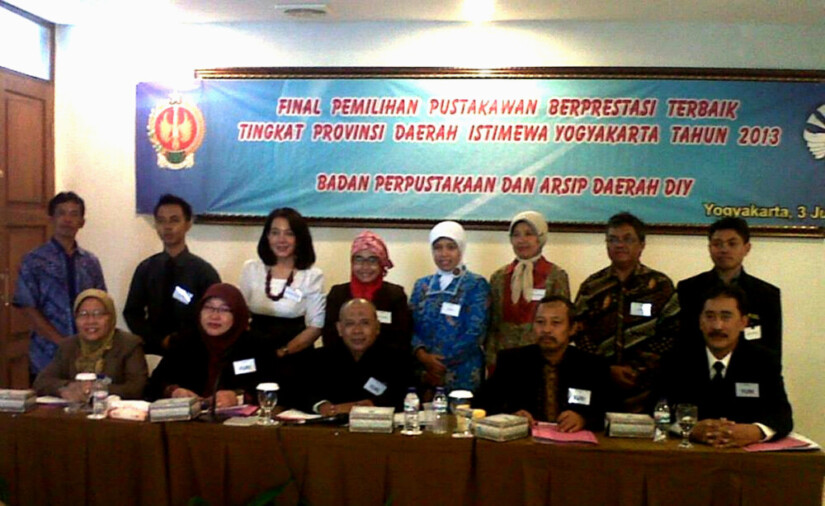
YOGYAKARTA – The landslide monitoring equipment installed in 12 provincecs and several foreign and domestic mining companies has made its maker, Teuku Faisal Fathani, S.T., M.T., Ph.D., earn the first winner in the selection of outstanding teaching and non-teaching staff nationally in 2013, held by Higher Learning Directorate General in Jakarta.
The lecturer in Civil Engineering and Environment at UGM expressed his surprise over his achievement as he had to compete with thousand other lecturers from across Indonesia. He was thankful, however, that the award would encourage him to keep making useful products for society. “This early warning tool is also applied in Myanmar apart from Indonesia,” said the man born in Banda Aceh, 38 years ago.
The tool which he named as ‘GAMA-EWS’ was made in 2007. Up until 2013, over 100 units have been in place in 12 provinces, in cooperation with the National Disaster Mitigation Agency, Ministry of Development of Underdeveloped Regions, International Consortium on Landslides (ICL-UNESCO), local governments, NGOs and mining companies.
Gama EWS is able to save people living in areas prone to landslides. It will detect the distance of earth cracks, surface deformation and precipitation to establish the landslide potential. It will send a signal during a danger. When the siren goes off, people have to evacuate.
The story started in 2003 when Asean University Network (AUN) appointed Prof. Dwikorita Karnawati, lecturer in Geological Engineering to supervise students funded by JICA to do research on landslides in Indonesia. They were equipped with five detection tools from Japan to be installed in Kulon Progo. The operation of the tools was complicated and when these broke down, they had to send them back to Japan. This made Dwikorita ponder that it would be difficult to keep relying on producing countries. She consulted with her colleague, Teuku Faisal Fathani, who had just returned from his doctoral study in Japan. Both discussed their ideas; later they were joined by a colleague from instrumentation.
After a long hard work, the tool was acknowledged. It was able to give a signal prior to a landslide in Banjarnegara in November 2007, saving some 30 people. In 2012 the tool was applied in United Mercury Group (UMG) mining area of Myanmar, while in 2013 it is applied in 8 locations of PT. Pertamina Geothermal Energy and dams in Sumatera, Java and Sulawesi.
In 2009, the GAMA EWS was named as one of strategic research by the International Programe on Landslides (IPL-UNESCO), as a model of Best Practice in Education for Sustainable Development with respect to Disaster Risk Reduction Program. In the second World Landslide Forum of the FAO in Rome, 2011, it was awarded the IPL Award for Success from International Programme on Landslides (IPL-UNESCO). Furthermore, in the 10th International Symposium on Mitigation of Geo-Disasters in Kyoto-Matsue, 2012, Faisal earned the Excellent Research Award and Award of Appreciation for his contribution in disaster mitigation in Asia.
He also initiates risk management activities, establishes interdisciplines cooperation from various institutions, including International Consortium on Landslides (ICL-UNESCO), Kyoto University, Ehime University, Tsukuba University, University of East Anglia UK, University of Zagreb and University of Rijeka-Croatia, also Public Work Research Institute (PWRI) Japan, Asian Institute of Technology-Thailand, China Geological Survey, University of East Anglia-UK, San Diego State University-USA, California Seismic Safety Commission-USA and GNS Science New Zealand.


